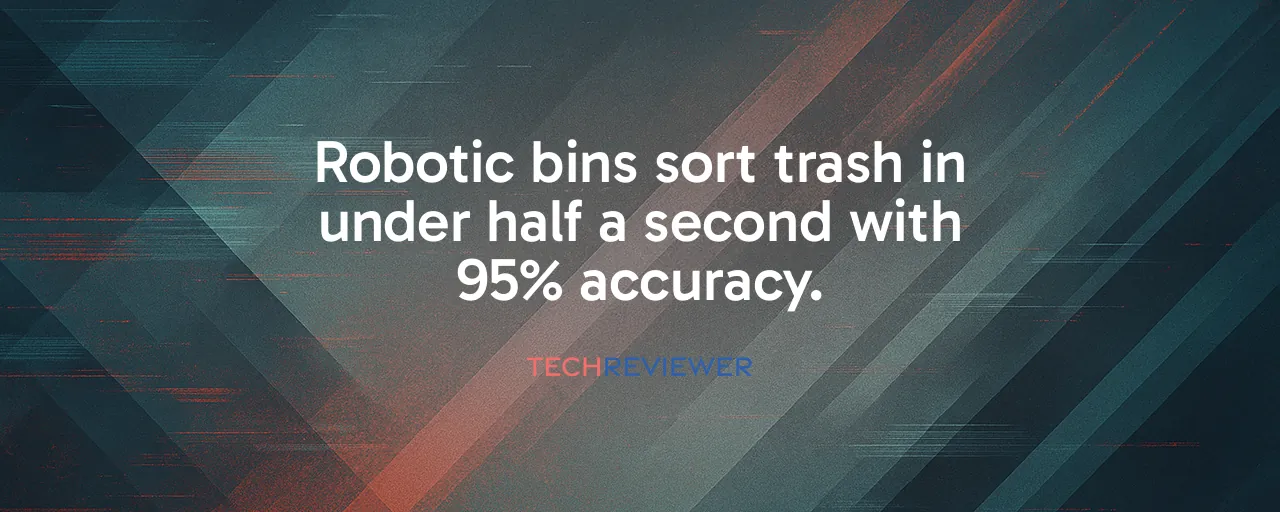Sorting Waste at Lightning Speed
Throwing a plastic bottle into a bin feels simple, but what happens next is often a mess. Only 9% of plastic waste worldwide gets recycled, with the rest piling up in landfills or polluting oceans. Ganiga Innovation, an Italian startup, is tackling this with Hoooly, a robotic bin that uses artificial intelligence to sort waste in under 500 milliseconds. With a claimed 95% accuracy, it identifies plastics, paper, metals, and more, making recycling more efficient. This speed and precision represent a significant advancement over slow, error-prone manual sorting methods still prevalent in many facilities.
The global plastic crisis is staggering. In 2022, the world produced 400 million metric tons of plastic, a figure growing by 8.4% yearly, according to Tsinghua University. Yet recycling rates remain stuck, with the U.S. managing only 5%. Hoooly's AI-driven approach, using computer vision and machine learning, sorts materials far faster than human workers, who average 20 to 40 picks per minute. By comparison, systems like these can handle thousands of picks, reducing contamination that ruins entire batches of recyclables.
Real-World Impact: Google and Recology
At Google's Milan headquarters, Hoooly bins are already at work, sorting waste for employees and providing data to meet sustainability goals. The system's ability to track waste composition helps Google pinpoint reduction strategies, like cutting single-use plastics. This deployment, showcased at the Google Cloud Summit 2024, highlights how corporate campuses can lead by example. The bins' real-time feedback also educates users, showing them exactly what happens to their waste, which builds trust in recycling efforts.
Across the Atlantic, Recology's Seattle facility uses Glacier's AI sorting robots, a similar technology. In 2,800 hours of operation, these robots diverted 14 tons of recyclables from landfills, proving their worth in high-volume settings. One customer even uncovered $900,000 in annual revenue from materials previously discarded, showing the financial upside. However, Recology's experience reveals challenges too: high upfront costs and integration with older systems can slow adoption, especially for smaller facilities.
Why Users and Businesses Care
For everyday users, smart bins simplify recycling. No need to decipher confusing symbols or worry about local rules; the AI handles it. At places like Milan's Malpensa Airport, where Ganiga's bins are expanding, travelers can toss waste without a second thought. Features like gamification or cashback rewards encourage proper disposal, though studies show mixed results on lasting behavior change. Privacy concerns linger, as some worry about data collection from bins tracking waste habits.
Businesses, meanwhile, face pressure from new regulations. California's SB 54, for example, demands 65% plastic recycling by 2032 and shifts costs to producers. Ganiga's software offers analytics to track waste and suggest reductions, helping companies comply. Waste Connections and other operators are adopting these systems to boost recovery rates, often exceeding 90%, while cutting sorting costs by up to 50% compared to the $100-$120 per ton of traditional methods.
The Road Ahead for Smart Sorting
The waste sorting robotics market is booming, valued at $3.29 billion in 2025 and projected to hit $16.9 billion by 2033, per industry estimates. This growth reflects demand from regulations and labor shortages pushing automation. Yet challenges remain: high costs deter smaller operators, and complex waste like mixed-material packaging still trips up sensors. Continuous AI training is needed to keep up with evolving packaging designs.
Looking forward, combining AI sorting with innovations like chemical recycling or blockchain for material tracking could close the loop on waste. Partnerships, like Ganiga's with Google Cloud or Avolta's Autogrill deployments, show collaboration is key. While automation may displace manual jobs, it creates new roles in tech maintenance and data analysis, offering a path to cleaner, more efficient recycling systems.
